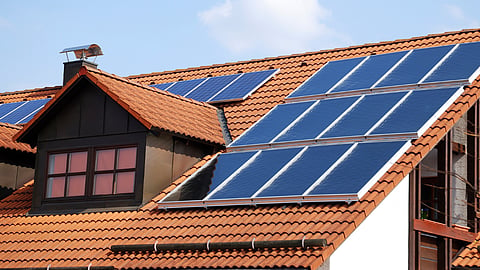Welcome reduction in solar panel and battery prices in South Africa as Chinese manufacturers flood market
Chinese solar manufacturers with expanding capacity have flooded the renewable energy market, resulting in a fierce price battle that's causing solar panel and battery prices to nosedive in South Africa. Oversupply and a surge in production, along with lower load-shedding than expected, have led to substantial reductions. Solar technology is becoming more affordable, ushering in a solar revolution in the country.
Sign up for your early morning brew of the BizNews Insider to keep you up to speed with the content that matters. The newsletter will land in your inbox at 5:30am weekdays. Register here.
Good news for solar panel and battery prices in South Africa
By Hanno Labuschagne
Oversupply and a price battle between Chinese manufacturers with growing manufacturing capacity have sent solar panel and battery prices in South Africa downwards in the last few months.
That is according to two reputed solar installation companies — AWPower and Solar Advice.
In May 2023, Bloomberg reported that Longi Green Energy Technology — the world's largest solar manufacturer — slashed the prices of silicon wafers by as much as 31%.
That came after solar silicon prices had already declined by almost half from early February 2023.
A significant contributing factor has been several new factories ramping up production and helping to end a shortage of the material in 2021 and 2022.
Green Building Africa also reported that prices of solar panel modules in the US had dropped to a two-year low in May 2023.
On a local level, MyBroadband found that the prices of solar panels from Solar Advice have decreased substantially compared to the start of the year.
The price of a 455W Jinko Solar Mono Percium solar panel has decreased from R3,563.85 on 19 January 2023 to R2,830.78 on 19 July 2023, a reduction of 20.6%.
The larger 545W Monocrystalline solar panel from JA Solar saw its price decline from R4,477.34 to R3,428.31 over the same period, an even bigger plunge of 23.4%.
According to AWPower managing director Christiaan Hattingh and Solar Advice director Armando da Silva, oversupply due to lower load-shedding than anticipated had also contributed to the price drops in South Africa.
Hattingh and Da Silva told MyBroadband there was a downturn in demand following a spike in panel orders earlier in the year.
They explained that suppliers had ordered vast quantities of panels as South African households showed increased interest in backup power systems amid reports of impending stage 8 load-shedding.
Analysis of Eskom's load-shedding statistics during peak electricity usage periods in February 2023 showed the utility had already shed over 7,000MW from the grid — the technical definition of stage 8 power cuts.
During that time, Hattingh said suppliers could push up solar panel prices for backup systems, while they had insufficient stock to meet demand. That situation has since been flipped on its head.
"The supply has now exceeded demand, and that means that suppliers have slashed prices to get rid of the extra volume," Hattingh said.
"There was a sudden increase in demand at the beginning of the year that no supplier was ready for, which drove the prices very high; now the suppliers have too much stock and are stock dumping," Da Silva stated.
Da Silva said the rand-dollar exchange rate and availability of raw materials also factored into the price reductions.
He estimated a price reduction of up to 80 cents per watt, which would work out to R364 on a 455W panel or R436 on a 545W panel.
Solar tax payback
South African taxpayers can also get a rebate of 25% on the cost of solar panels intended for household use, up to a maximum value of R15,000.
However, you would have to buy panels costing R60,000 to claim that much back. That would be enough to buy you 21 Jinko Solar 455W Mono Percium panels.
This might be an overkill option for most households that cannot sell excess electricity back to the grid.
With a peak combined output of 9.5kW, 21 panels could fill a 13.5kWh Tesla Powerwall in about an hour and a half.
Unfortunately, the government won't be helping you cut the cost of your battery or inverter, as its incentive does not cover these.
Nevertheless, there is at least some good news on that front too.
Da Silva told MyBroadband that the prices of these components have also come down due to the same factors that drove down panel prices.
In terms of raw material costs, Chinese prices of lithium carbonate — a key component in modern backup batteries — reached a 19-month low in April 2023 after hitting a record in November 2022.
While the price has recovered slightly since then, it is still below half the average in 2022.
The prices of nickel and cobalt — which are used in non-phosphate lithium-ion batteries — have also receded.
The graph below from Trading Economics shows the price of a tonne of lithium carbonate in Chinese Yuan over the past year.
Read also:
This article was first published by MyBroadBand and is republished with permission

